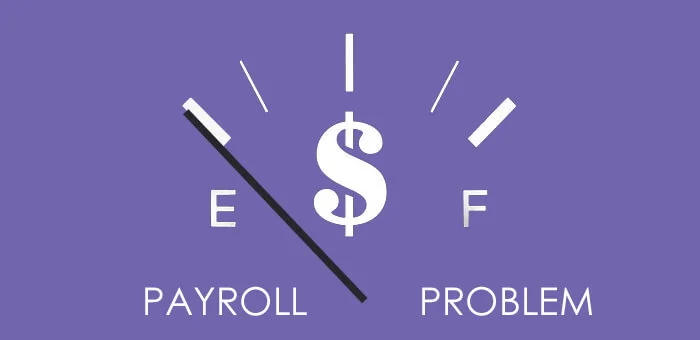Invoice Factoring Vs. Line Of Credit: Which Is Right For You?

Cash flow is the lifeline of any business. Managing it effectively often requires external support, particularly for small and medium-sized enterprises (SMEs). Two popular financing options for addressing cash flow challenges are invoice factoring and lines of credit.
These tools serve distinct purposes, making it important for business owners to understand their differences and applications. This article delves into factoring vs line of credit, exploring how each works, their advantages, and their best use cases, helping you make an informed decision.
What Is Invoice Factoring?
Invoice factoring is a financing solution where businesses convert their unpaid invoices into immediate cash by selling them to a third-party organization, referred to as a factoring company. This method addresses cash flow gaps caused by slow-paying customers, giving businesses the liquidity they need to cover operating expenses, including payroll.
Factoring generally occurs in two stages: first, the factoring company provides an upfront advance, typically 80% to 90% of the invoice amount. The remaining portion, less a factoring fee, is released once the customer pays the invoice in full. This setup shifts the responsibility of collecting customer payment to the factoring company, saving businesses time and resources.
For businesses experiencing unpredictable cash flow or frequent delays in customer payments, invoice factoring offers a straightforward way to stabilize liquidity. It does not require a perfect credit score, making it accessible for startups and companies with limited credit histories.
What Is a Line of Credit?
A line of credit is a flexible loan that banks or financial institutions provide; unlike invoice factoring, which is tied to specific invoices, a line of credit allows businesses to access funds up to a predetermined limit as needed. This flexibility makes it suitable for various purposes, including purchasing inventory, managing seasonal fluctuations, or funding projects.
Lines of credit typically come with variable interest rates, and businesses must repay the borrowed amount along with interest within the agreed timeline. Approval depends on the borrower’s creditworthiness, financial history, and ability to demonstrate consistent revenue.
While lines of credit offer spending flexibility, they also require disciplined financial management. Late payments or over-borrowing can lead to increased costs and strained financial health.
Factoring Vs. Line of Credit: Key Differences
Factoring and lines of credit serve different purposes for managing business finances. Factoring converts accounts receivable into immediate cash, addressing cash flow gaps caused by delayed customer payments. A line of credit offers flexible access to funds for various expenses but requires strong credit and disciplined repayment. Each option suits distinct financial needs and business goals.
Purpose and Application
Invoice factoring specifically addresses cash flow challenges by leveraging accounts receivable. It is most useful for businesses that face delayed customer payments but need funds quickly to maintain operations. For example, companies in industries like staffing, manufacturing, or logistics often rely on factoring to keep operations running smoothly.
Lines of credit, on the other hand, are versatile. They are ideal for businesses needing funds for broader purposes, such as launching a new product, covering seasonal expenses, or managing unexpected costs. The flexibility of a line of credit makes it a valuable tool for long-term financial planning.
Approval Requirements
Factoring approval is based primarily on the creditworthiness of a business’s customers, as they are responsible for repaying the invoices. This makes it an attractive option for startups or companies with less-than-perfect credit.
Lines of credit, however, require the borrower to demonstrate strong credit history and financial stability. Banks assess the business’s revenue, assets, and overall creditworthiness before extending a line of credit, making it challenging for newer or smaller businesses to qualify.
Costs and Fees
Invoice factoring involves a factoring fee, usually ranging from 1% to 5% of the invoice value. This fee depends on factors such as the customer’s creditworthiness and the duration of the payment term.
Lines of credit come with interest rates that vary based on market conditions and the borrower’s credit profile. While the rates may be lower than factoring fees, the unpredictability of variable rates can make planning more challenging.
Advantages of Invoice Factoring
Invoice factoring offers several benefits for businesses that struggle with cash flow unpredictability. It provides immediate access to funds without adding debt to the balance sheet, as it relies on existing accounts receivable. Additionally, factoring companies often handle collections, reducing the administrative burden on businesses.
For example, a small manufacturing company might face delayed payments from large retailers. By factoring its invoices, the company can access working capital immediately, ensuring it can pay suppliers and employees on time. This arrangement helps the business maintain smooth operations and strengthen relationships with its payroll partners.
Advantages of a Line of Credit
The primary advantage of a line of credit is its flexibility. Businesses can draw funds as needed and only pay interest on the amount borrowed. This feature makes it ideal for managing seasonal expenses or funding projects with variable costs.
For instance, a retail business preparing for a holiday season may use a line of credit to stock inventory. As sales increase, the business can repay the borrowed amount, freeing up the credit line for future use. This revolving nature provides ongoing access to funds, supporting both short-term needs and long-term growth.
When to Choose Invoice Factoring
Invoice factoring is particularly suitable for businesses with slow-paying customers and a consistent volume of accounts receivable. It is an effective solution for maintaining liquidity when cash flow gaps arise, especially in industries with extended payment terms.
Factoring is also a practical option for businesses that need quick funding but cannot qualify for traditional loans or lines of credit. Because the focus is on customer creditworthiness, businesses with limited credit history or subpar scores can still access the funding they need.
When to Choose a Line of Credit
A line of credit is better suited for businesses with strong credit and diverse funding needs. It offers the flexibility to cover a variety of expenses, making it an excellent choice for businesses with unpredictable cash flow or irregular expenses.
Companies with established financial stability often use lines of credit for growth initiatives, such as expanding operations or investing in new technology. While it requires disciplined financial management, a line of credit can provide long-term support for businesses seeking to scale.
Balancing Flexibility and Cash Flow Stability
When deciding between factoring vs line of credit, businesses must evaluate their unique needs and financial situations. Invoice factoring excels at addressing immediate cash flow gaps caused by slow-paying customers. It is particularly beneficial for companies with significant accounts receivable but limited credit histories. By offering quick access to working capital, factoring ensures that operational expenses, including payroll, are met without delay.
Lines of credit, on the other hand, offer flexibility for diverse funding needs. They are ideal for businesses with predictable revenue streams and strong credit, allowing them to manage seasonal expenses or invest in long-term growth initiatives. However, the stricter approval process and fluctuating interest rates may make this option less accessible for newer businesses.
The Role of Payroll Funding in Supporting Cash Flow
For businesses managing tight cash flow, payroll obligations often take precedence. Delayed payments or unexpected expenses can disrupt payroll schedules, impacting employee morale and productivity. While factoring and lines of credit can address these challenges, businesses may consider payroll funding a specialized solution.
A payroll funding company like Payro Finance provides short-term funding to cover payroll gaps. Unlike factoring, which depends on invoices or lines of credit with broader uses, payroll funding focuses solely on employee wages. This targeted approach helps businesses maintain workforce stability during financial fluctuations.
How Payro Finance Supports Your Cash Flow Needs
At Payro Finance, we understand the challenges of maintaining cash flow, especially when payroll deadlines approach. Our payroll funding solutions are tailored to help businesses navigate short-term cash flow gaps without the complexities of factoring or traditional credit lines.
With quick approvals and straightforward terms, we enable you to focus on growth while ensuring your team gets paid on time.
Morris Reichman
hello@payrofinance.comMorris Reichman is the founder and CEO of Payro Finance. Former Vice President at Infinity Capital Funding an alternative finance company, Morris possesses a versatile background in the finance industry. Having spent 7+ years working across global macro operations and start up corporate finance Morris's expertise is in business accounting, risk management and investment analysis. Morris founded Payro Finance to support business owners and ensure their business continuity.
Need a short-term loan to cover payroll?
Apply in under two minutes, and get approved within 2 days. Once approved, funds are in your account the same day.
- Always 1.5% weekly
- Up to $500,000
- Same-day funding


